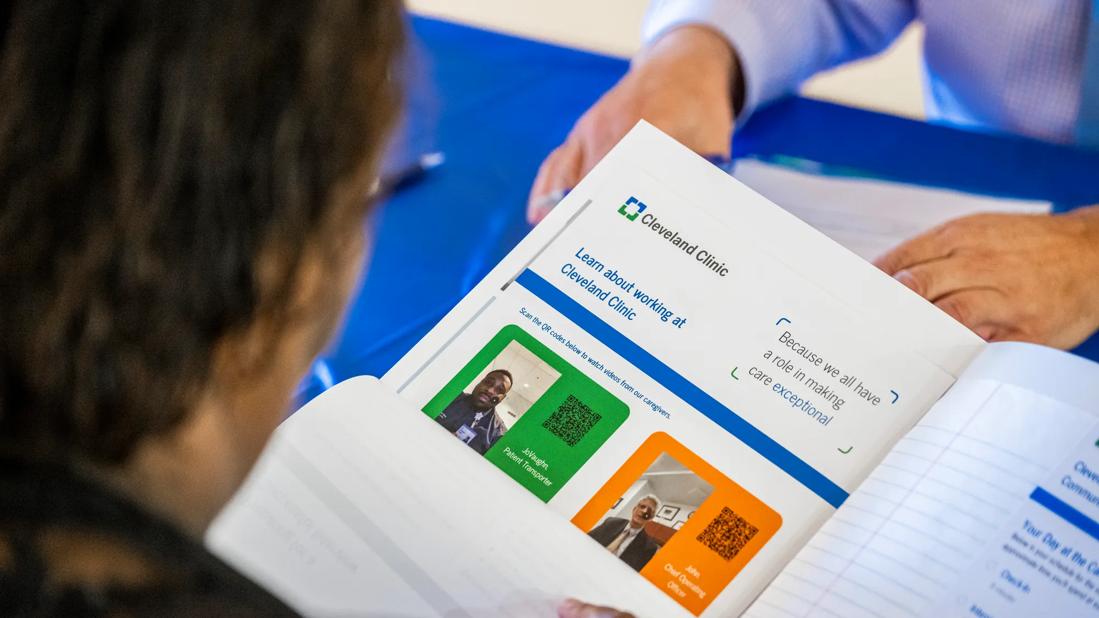Informative and inspiring from the first day

Every Monday, Cleveland Clinic’s Mandel Global Leadership & Learning Institute (MGLLI) holds new caregiver orientation for all recently hired employees in North America, from administrators and executive leaders to physicians and nurses. When the COVID-19 pandemic hit in March 2020, delivery of those sessions needed to pivot.
Advertisement
Cleveland Clinic is a non-profit academic medical center. Advertising on our site helps support our mission. We do not endorse non-Cleveland Clinic products or services. Policy
“We had about 48 hours to switch from an in-person experience at different locations to a virtual experience,” says Lisa Minor, MBA, CPC, Director of Caregiver Development at Cleveland Clinic. “Since then, we have iterated on the virtual experience to make it even better for our caregivers joining this year and beyond.”
Creating a virtual onboarding experience within a couple of days required a lot of collaboration and coordination, says Minor. Her team in MGLLI partnered with colleagues in talent acquisition, operations and other areas to develop the program.
“We mapped out the ‘must haves’ and the ‘nice to haves’ for orientation,” she says. “The goal was for employees to start on time with the essentials with no impact to patient care.” As the pandemic persisted, Minor’s team realized that the program they built as a stopgap measure would become permanent.
In the fall of 2020, Cleveland Clinic contracted with vFairs LLC to create a robust virtual onboarding program using the company’s all-in-one hybrid and virtual events platform. A year later, they rolled out the Global New Caregiver Experience for North America.
The orientation has two primary components – a live welcome session and a self-directed virtual experience. Seasoned facilitators lead the 90-minute welcome session, held each Monday at 8 a.m. EST. They share Cleveland Clinic’s history, mission and vision. “It’s a very inspirational time to connect with others,” says Minor.
The self-directed portion, which takes approximately 90 minutes to navigate, opens with a view of the outside of Cleveland Clinic’s Sydell & Arnold Miller Family Pavilion. Caregivers click on an “enter here” sign near a door and are whisked inside virtually to the lobby and greeted by an avatar of K. Kelly Hancock, DNP, RN, NE-NC, FAAN, Chief Caregiver Officer for Cleveland Clinic. From there, they can visit two primary areas:
Advertisement
“With the help of vFairs, we were able to make the experience personalized so that a caregiver can access the documents relevant to their location,” says Michelle Lampton, Learning Experience Designer for MGLLI. “This way every caregiver is able to learn what it means to be a part of Cleveland Clinic while also getting the personalized information needed for their unique circumstances.”
Minor shared her team’s experience and expertise in a session titled “Virtual Onboarding – A Pandemic Pivot” at the Society of Consulting Psychology Virtual Annual Conference in early February. If you plan to build or revamp a virtual orientation, consider this advice from Minor and her colleagues:
Advertisement
Putting its best foot forward during the Global New Caregiver Experience is paramount for Cleveland Clinic, which onboarded more than 12,000 new employees worldwide in 2021.
“We strive to be the best place to work in healthcare anywhere, so our first-day experience needs to reflect that,” says Minor.
Advertisement
Advertisement

Strategies for building connections, staying present

Annual event galvanizes leaders and inspires excellence

Expert tips from Cleveland Clinic’s Chief Legal Officer

Groups move the metrics in environmental services and sterile processing

Initiative generates new ideas for improving efficiency, eliminating waste

A new tool offers micro-education for improving meeting productivity

Well-being initiative aims to prevent chronic disease

Certified coaches help hospital teams build trust, improve communication